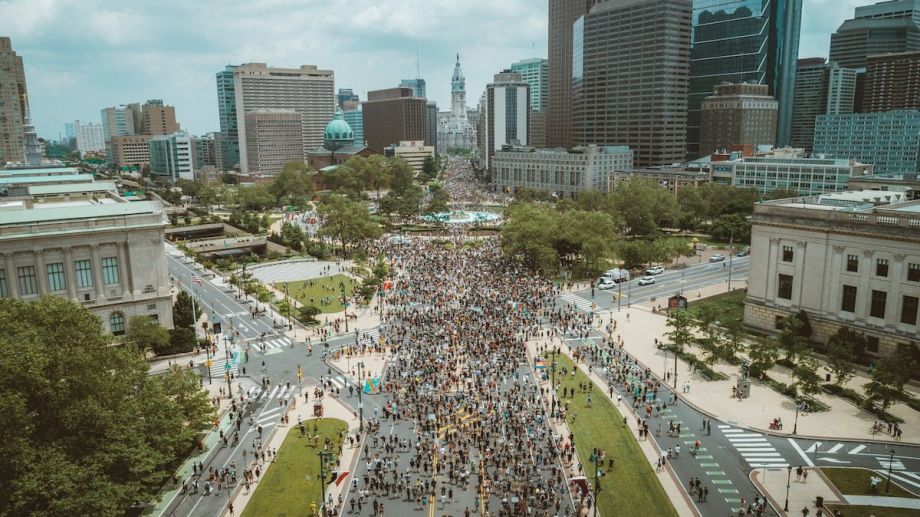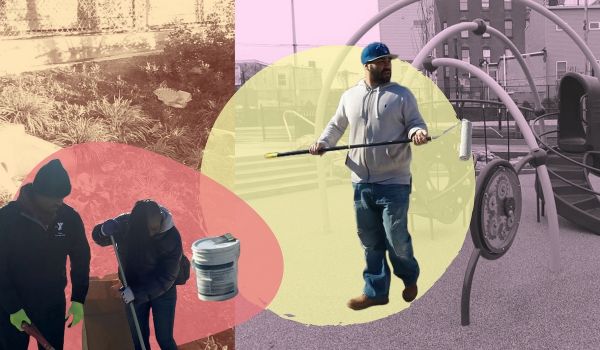I married a noise machine aficionado. So when I went to bed early sans husband and mechanical hums, I was awoken by the high-pitched squeal of drag racing (or drag racers burning rubber) on the nearby Benjamin Franklin Parkway, which runs 1 mile from Logan Circle to the Philadelphia Museum of Art. This Fast and Furious melody is what I’ve been missing for years of married nights. As a new mom, I have no energy for many evening curiosities, but the underground drag racing community interests me.
I once taught a student who was involved in underground drag racing. I fondly remember him warning me not to bring my imaginary Toyota minivan to the area because his friend would likely steal the motor. “But not if I was with him,” he quickly interjected. I was more startled and incredulous that he would even suggest that I drive a minivan.
There has been public outcry about the increase in exhibitionism. But a brief glimpse of the history of the thoroughfare reveals the speed racers are actually using the infrastructure as intended. That is the problem.
The Ben Franklin Parkway was not conceptualized as a congested urban thoroughfare. Like its Parisian counterpart, the Champs-Élysées, the Parkway area was designed during the City Beautiful movement to give city dwellers a place to connect with nature. As seen in original plans and photographs, today’s efficient highway was once bucolic with walk paths for relaxed meandering. Low-speed recreational vehicle use did not encroach upon pedestrian safety. City-dwellers spent Sunday afternoons walking in their finest wares. Writing in the introduction to the proposed Parkway plan, Charles Cohen, speaking on behalf of the planning board, writes, “What it may become, when the building [Philadelphia Museum of Art] already planned to flank it are completed and details of the gardens are left on the ground, must be left to the future to record and adequately to appraise.” Cohen could not have known that decades later, these streets would become an emblematic part of the parkscape.
The modern Ben Franklin Parkway as we know it was designed for the automobile. Years after Cohen’s pronouncement, driving lanes and boulevards were added, much to the Parkway’s modern confusing and congestive fate and current identity crisis. The city’s lead city renewal designer Edmund Bacon would frequently describe the automobile as “an honored guest.” As countless users have experienced, it is not responsive to the needs of pedestrians and undermines contemporary planning ideals that have been substantiated in recent decades. Famed urbanist Jane Jacobs would remark that Swann Memorial Fountain in Logan Square was “whittled to a small traffic island” adorned by a “great soaring fountain” that’s mostly “an elegant amenity for those speeding by.”
Decades later, the Reimagine the Parkway Commission, a coalition of organizations launched in 2022 and tasked with making the thoroughfare “Philadelphia’s greatest public space,” would elaborate on Jacob’s frustration, noting about the current user experience:
“Currently, bikes and traffic flow together without protection for cyclists. Although crosswalks are striped widely to provide ample space between stopped vehicles and pedestrians, crosswalks do not provide sufficient time for crossing. Motorbikes and ATVs utilize traffic lanes illegally, performing tricks, and even speeding through crosswalks when pedestrian crossing times are being signaled. Walking on the Parkway, especially with children, is difficult for many families.”
Alas, a Philadelphia designed for commuters and tourists, not its own citizens. It will cost millions to rethink and revise these faulty design decisions as the commission begins the combined infrastructure, transportation, and economic plan.
Why then, should we be surprised to see doughnut tire marks across the parkway? Why should we be surprised to see Dodge Chargers and Chevy Camaros line up to race like it’s 2001? Why are we dismayed that throngs of young adults enjoy parading their dirtbikes and four-wheelers around? That is what the thoroughfare was created for. As philosopher Henri Lefebvre espoused, the construction of space is very much ideological.
We must begin to see disturbances in the city as a by-product of the erroneous settings we have created. However, if we take the time to explore other infrastructure in space (and many times, the refusal to repair spaces) we are confronted with the ideological limits of our contemporary placemaking imagination.
When I reflect on the larger symbolism of the parkway in our city, I can’t help but wonder… why is it still permissible for our children to go to school buildings that are overheated and filled with lead and asbestos? Why do we keep emulating unproven plan developments that stratify and marginalize low-income neighborhoods? Why are we still having conversations about stadiums in ethnic neighborhoods while all the studies and common sense suggest that it will stratify residents? What human needs for belonging and community will overshadow the current demands of technology, human entertainment and mechanization in what we are building long-term? How are we building in a way that is unsustainable for the future?
As we design the next era of the Philadelphia landscape, we must plan for the people, not technology.
Lydia Kulina-Washburn is an urban educator in Philadelphia, where she lives. She writes about urban placemaking and educational equity. Follow her on Twitter @lydiakulina.

















Add to the Discussion
Next City sustaining members can comment on our stories. Keep the discussion going! Join our community of engaged members by donating today.
Already a sustaining member? Login here.